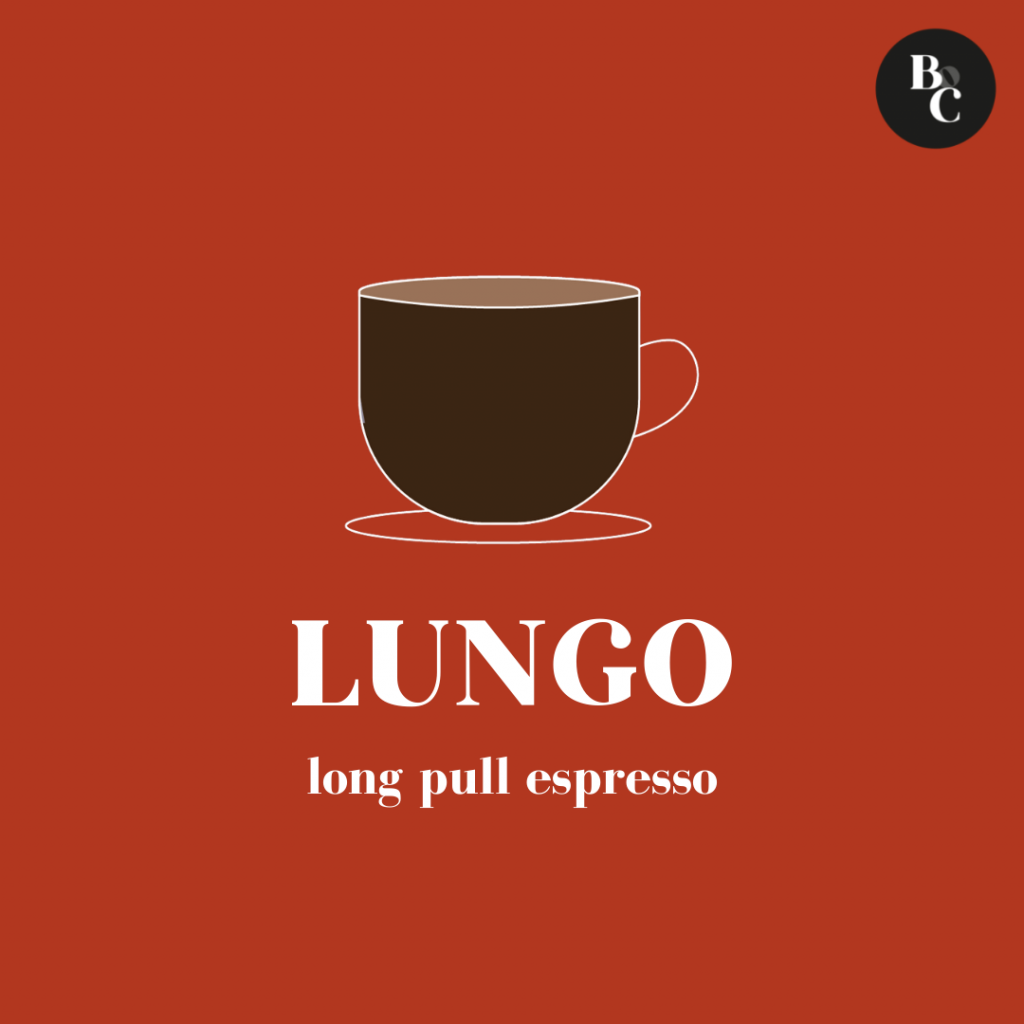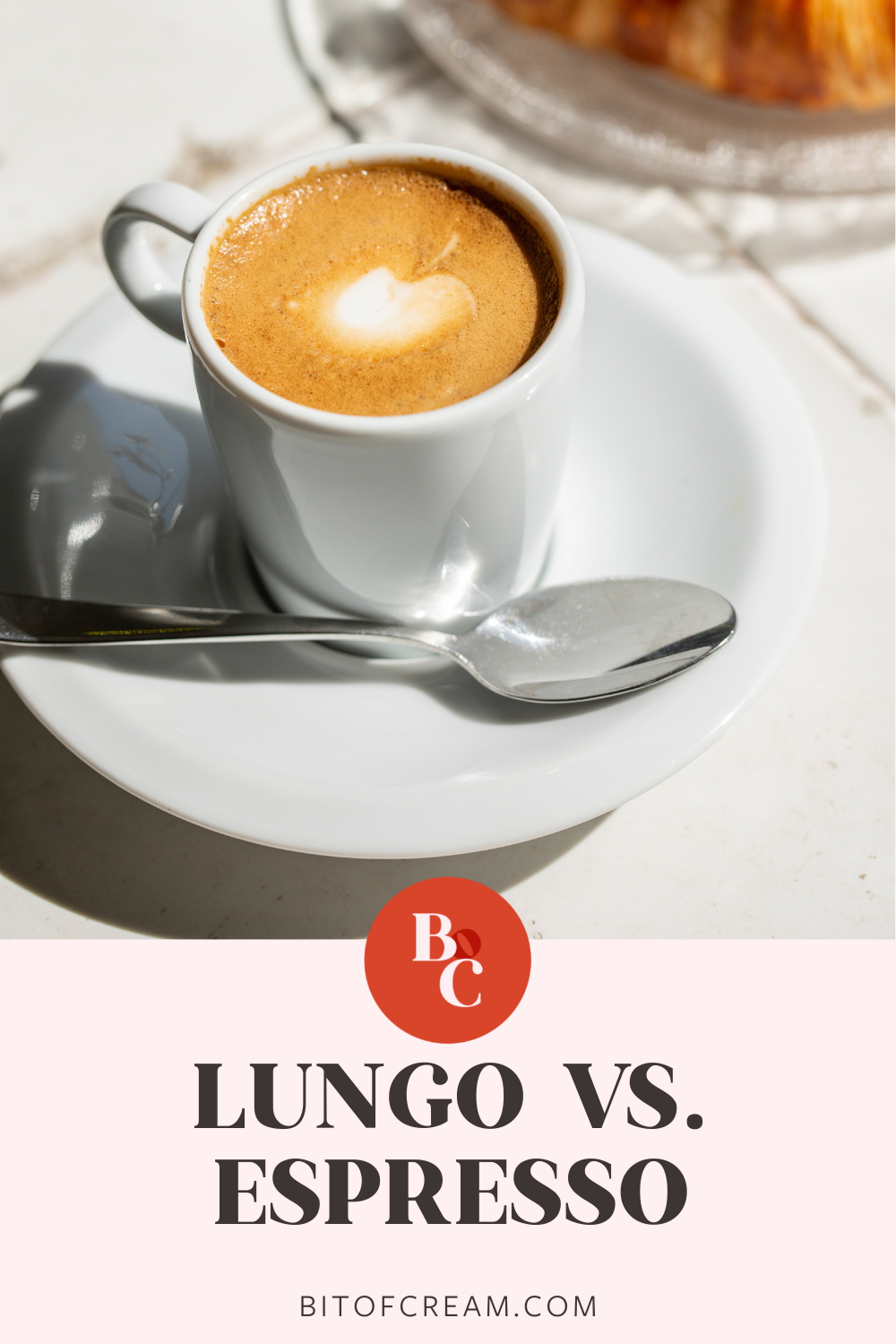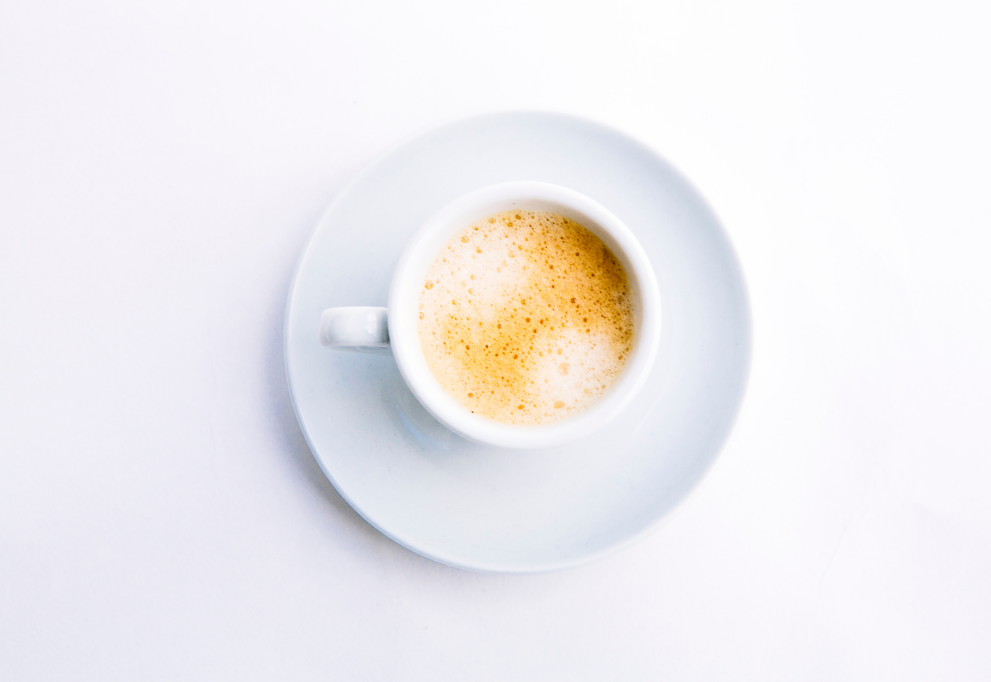In the life of every coffee fanatic, there will probably be a moment when you step up to the local barista only to realize that you don’t recognize half of the drink options on the board.
It’s a formative experience. And, yes, I’ve been there too!
It’s actually incredible how many drinks can be made with so few ingredients. Would you have guessed that combining coffee and milk could be a lifelong creative pursuit?
Most coffee drinkers are familiar with Espresso from the jump, but few people realize there are variations to the traditional espresso shot like a Lungo.
In this article, we’ll discuss the differences between espresso and lungo and the best way to go about making your own and even ways to improve your current techniques!
What is Espresso?

Espresso is a thick, concentrated form of coffee that you can serve alone or use as a building block for other crafted coffee drinks.
To “pull” espresso shots, high-pressure is forced through finely ground and tightly packed coffee beans. This process usually takes 20-30 seconds, and results in a 1 oz drink.
The consistency and flavor of shots may vary based on a number of factors like the type of beans, size of the grind, pressure and temperature of the water.
Alone, a shot of espresso is bold, intense, and bitter. It has a stronger taste than black coffee since it’s highly concentrated espresso and brewed with less water. When pulled correctly from the machine, it forms about a ⅓ thick layer of golden crema on the top that’s to die for.
You’ll find espresso is the cornerstone for every manner of coffee-drink from around the world.
What is a Lungo?

It may be easiest to think of a Lungo as a “long” espresso, meaning it takes twice as long to pull the shot.
The extra duration allows more pressurized hot water to pass through the ground coffee pack. A Lungo doubles the usual amount of water used to brew a typical shot of espresso.
This method dissipates a significant amount of the bitterness and acidity you might expect with a standard espresso. The resulting cup highlights the bright, fruity and floral notes of the coffee. It also mellows the caffeine-punch you’d get from a similar volume of espresso.
Differences between Espresso vs. Lungo

We’ve already touched on the technical differences in the brewing process between espresso and Lungo. And, yes, it can be helpful to understand those distinctions. But, for most of us, the sensory experience of espresso and lungo is probably more important.
Taste
Since a Lungo doubles up on the extraction time of a standard espresso, its coffee flavor is milder and more diluted. However, the extra extraction time develops the coffee’s naturally fruity and sweet qualities.
Where an espresso tastes strong, bold, and acidic, a Lungo tastes smooth, light, and fruity. Because of this difference, a Lungo is incredibly delicious when you use a lighter roast of espresso that is already bright, mild, and vibrant.
Appearance
A Lungo is noticeably larger from the get-go. With an espresso shot being 1 oz, a Lungo easily doubles that amount of liquid.
Since you pull an espresso with half the amount of water as a Lungo, it’s more concentrated and, therefore, much darker in color. As a result, an espresso looks almost black in a cup with ⅓ of an inch of silky, golden crema on top.
A Lungo is less opaque than an espresso, with a lighter brown translucence. In addition, the crema on a Lungo is much thinner and paler than an espresso’s.
Caffeine
A Lungo has slightly more caffeine than espresso since double the water needs to flow through the coffee grounds. More water means more extraction and, thus, more caffeine.
If you compare the drinks oz for oz, the pure espresso would have more caffeine. But, since the two drinks’ standard sizes are 1 oz vs. 2-3 ozs, the Lungo has more caffeine in one serving and espresso has a lower caffeine content.
However, the extra caffeine isn’t enough for you to really feel a difference. So, if you prefer the taste of one over the other, rest assured that both will satisfy the need for a pick-me-up.
Quantity
Since the ratios for a Lungo and espresso are different, the coffee’s resulting size also differs. A Lungo, with a 1:3 coffee-to-water ratio, is twice the size of a single espresso.
A single shot of Espresso is 1 oz, while a Lungo can be 2 or even 3 oz depending on the exact extraction time.
How To Make Espresso

1: Grind
To achieve peak flavor, grind your espresso beans only moments before brewing. This is true for all types of ground coffee beans – the fresher, the better.
You want to pay close attention to the texture of your grind since a finer grind will yield drastically different results than a coarser grind. Ideally, you’re looking to achieve a grind resembling granulated sugar.
2: Dose
Your “dose” is coffee-lingo for the amount of coffee grounds you’ll use to fill the portafilter and brew your espresso.
For a standard single shot of espresso, you’ll use 7g of finely ground beans, resulting in 30ml or 1 oz of brewed espresso.
Weigh out the necessary grounds and pour them into the portafilter.
3: Level
Next, you’re going to level the grounds in the portafilter. This ensures the water disperses evenly throughout the grounds and will filter through them all at the same rate.
Suppose you have a mound of coffee in the center and only a thin layer around the outside. In that case, the water will move through the thinner portions much faster than the center, resulting in unevenly brewed espresso.
To avoid this, gently tap the portafilter with the palm of your hand a few times until the surface looks even.
4: Tamp
Tamping the grounds is the second part of leveling. You’re tamping for the same reason; to ensure even brewing across all the grounds.
This step requires practice, and the more you do it, the more natural it will become, and your espresso brewing will only get better and better.
Place your portafilter on a stable and level surface and grip the tamper like a doorknob. Then, press the tamper into the portafilter with your elbow pointing toward the ceiling while applying even pressure.
Your goal is a smooth, flat layer of coffee grounds so that the water filters through the machine at the same rate.
5: Brew
Finally, you’re ready to pull your shot!
Place your portafilter in your espresso machine (if you’re unsure about where to put the portafilter, check out our full espresso machine guide!). Then, place your cup under the nozzle.
You will pull the shot for 18 to 30 seconds until the full 30ml of water has run through the beans, and the perfect ratio of crema crowns your espresso.
How to make Lungo
1: Grind
A Lungo’s grind is slightly more coarse than a regular espresso grind. Aim for a texture that’s a bit chunkier than finely ground granulated sugar. If you’ve ever seen “sugar in the raw,” you’ll want to aim for a grind that’s just a bit finer than that.
Again, you should grind your beans right before brewing for the best flavor.
2: Dose
A Lungo uses the same dose of coffee grounds as an espresso but with double the water and, therefore, a longer pull.
Fill your portafilter with 7g of your freshly ground beans.
3: Level
You’ll want to level the grounds in your portafilter by gently tapping the side of the filter with the palm of your hand.
This step makes achieving a perfect tamp and evenly brewed espresso easier.
4: Tamp
Tamping creates a level surface for the water to filter through, resulting in evenly brewed espresso.
Place your portafilter on a stable and level surface and grip the tamper like a doorknob. Next, position your elbow toward the ceiling and press the tamper into the portafilter with firm pressure.
Practice makes perfect, so don’t shy away from making a few Lungos for friends and family until you get this part down.
5: Brew
Place the filter into the machine, align your cup under the spout, begin the pull, and start your timer.
You’ll want the entire 130-170 ml or 2-3 oz of water to filter through the espresso grounds, which will take about 60 seconds total depending on the type of machine that you have.
FAQ
A Lungo has slightly more caffeine than an espresso since double the water needs to flow through the coffee grounds. More water means more extraction and, thus, more caffeine. However, the bold coffee taste of a Lungo will be milder in comparison to an espresso.
“Lungo” translates to “long” in Italian, referencing the signature long-pull of espresso necessary to craft this coffee.
A Lungo and an Americano are similar, but not the same. You make a Lungo by pulling a long shot of espresso, meaning doubling up on the amount of water that flows through the coffee grounds. The Americano is one of the easiest coffee recipes! It is made by pulling a regular shot of espresso and then topping it with hot water.
Once it’s in the glass, a lungo is roughly the size of a doppio, or two shots of espresso. However, the size isn’t the only difference for this drink. As far as making one at home, a lot of espresso machines have a preset for it. Nespresso machines even have dedicated lungo pods to use for the drink.
The caffeine content per brewed espresso capsule will vary between approximately 55 and 65 mg. The lungo blends contain 20% more coffee per capsule; therefore, they have slightly higher caffeine content, about 77-89 mg.
Looking for some cute cups to pour your perfectly crafted espresso drinks in? Check these out!
